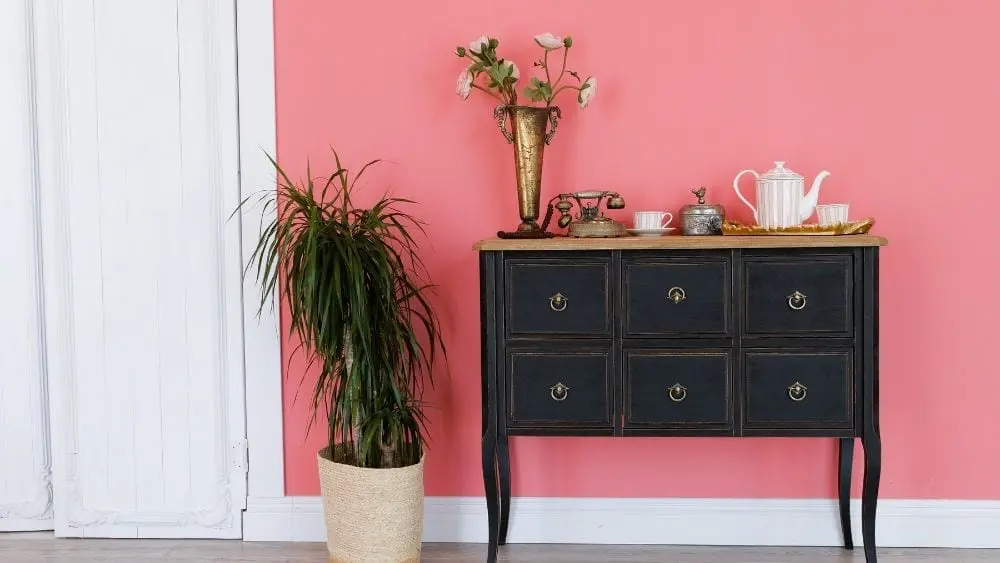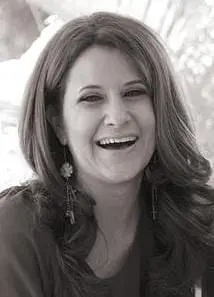
No one wants to spend hours each week cleaning the house. But conquering clutter is no easy feat if you’ve got kids or a messy spouse, or you’re just simply a normal, busy family.
“No one wants to create jobs for themselves the minute they’re home,” says Wendy Ellin, an Atlanta-based productivity expert and author of Enough Is Enough, Get Control of Your Stuff. “Your home is there to create joy, and how much you enjoy it is contingent upon how you set it up.”
The key to an organized home is learning the art of containment—that is, grouping like items in appropriate containers so it’s easy to put them away and find them when you need them. Let’s look at the rooms most people have trouble keeping clutter-free with tips on how you can keep them neat—for good.
The Entry
Unless you live alone or have your mail sent to a post office box, chances are the entry to your home can go from welcoming to wild the moment someone walks through the door. Even if your entry is tiny, placing a simple divided basket with sections for each family member near the front door can do wonders to keep everything in one place and out of sight. Since mail can pile up here, it’s important to dedicate one of those divided sections to papers, preferably with a file folder that’s separated into sections like bills to pay, mail that requires RSVPs and things like that.
“Clutter is nothing more than the manifestation of indecision,” Ellin says. “Your entryway is the first thing you see when you arrive home, it sets the stage for how you live, so having a place to put the stuff that piles up there is the first step toward having a home you’re glad to retreat to.”
If you immediately take your shoes off when you get home, place a mat for shoes and wet umbrellas. Receive a lot of junk mail? “Go right to the recycle bin before doing anything else,” Ellin says. Everything else should have an immediate home. “If you put things where you’ll need them next, you’ll never run around looking for anything again.”
If possible, place a small table with drawers near your entry for keys. No room? Try a narrow telephone stand (or something comparable) that’s just wide enough to place a tin or basket with a lid on top and drop your keys there.
The Kitchen
From meal prep to homework sessions and conversation stations, the kitchen works harder than any other room in the house. It’s the prime gathering place, whether you’re entertaining or simply checking in with family members. That said, most kitchens stock way more than just pots, pans, plates and drinking glasses. Just think of the ubiquitous junk drawer that most homes have; it’s almost always near the kitchen.
When it comes to drawer space, most people pick up organizers for utensils, but everything else just sort of gets tossed around. Again, it comes back to containing like items. Drawer separators and inexpensive containers in myriad shapes are ideal for junk drawers, which tend to house everything from batteries and candles to cords and loose change. Arrange containers like a jigsaw puzzle until all like items are grouped, then slip larger items like an emergency flashlight along the perimeter.
The same idea goes for drawers that house kitchen towels, cooking utensils and other must-haves. When possible dedicate entire drawers or shelves to like items. When you find yourself with too many loose items in either, invest in shallow containers or reuse those you have around the house to group things accordingly. Over time your family members will get used to which drawers and cabinets house what — the key is having a dedicated, contained place for everything.
“There are containers for everything these days,” Ellin says. “Almost everything I have in my closets, drawers and shelves is stored in some sort of a container. It makes all the difference in the world.”
Of course, you’re less likely to need containers for plates, pots and glasses — unless it’s those you don’t use very often. If you’re a gourmet chef with tons of kitchen gear, you may want to consider a hanging shelf near the stove for pots and pans to keep them out of the way but still at arm’s reach. There are also space-saving kitchen organizers specifically made for storing those items inside your cabinets, although this can get expensive if you have a ton of items to store. Even just a simple stack of pans on the same shelf will do wonders to keep your kitchen tidy. It’s when pans are mixed with pots and platters in different areas that chaos tends to ensue.
If your family loves coffee, consider a coffee station. Choose a spot near the coffeemaker where you can keep your coffee pods or grounds, cups and spoons handy. Baking more your thing? Keep baking items grouped together near the oven, and your day-to-day will feel a lot smoother.
If you love the look of glass cabinets, try keeping items you rarely use there, such as platters, decorative bowls and barware. Or you can use affordable, clear containers for things like rice, pasta and other dry goods, or reuse glass vases and jars that once housed food. These tend to look great when stored this way, plus it saves a ton of room on your pantry shelves.
Finally, if your fridge and pantry always look like a hurricane just blew through, it’s time to extend the art of containment to those areas, too. These spots experience a high degree of item rotation, which is why it’s hard to keep them in check.
In the fridge, glass containers are great for prepared or precut foods. Fridge drawers are ideal for cheese and proteins, and plastic bins corral messy condiments, sauces and spreads.
The pantry, however, is another matter entirely. People tend to maximize the space by stacking everything, making it hard to find anything. Start by taking everything out (this goes for your first fridge redo, too). It helps to group some items by meals, such as breakfast and snacks. Remove visible packaging when possible and store in appropriate containers to save space. Consider a space-saving lazy Susan or two for canned goods and jars. Heavy items like sodas and water bottles should go toward the bottom, with lighter items near the top. This is easier on the eye and helps distribute weight more evenly. Breathable baskets are great for produce and items that don’t require refrigeration, plus it keeps clutter off your counters. Some items also take less space when stored vertically, so try different configurations until you find what suits your space best.
If you don’t have a pantry, don’t worry. All of these tips transfer to cabinet shelving, too. It may require a bit of trial and error to find the right home for all your storage needs.
The Bathroom
This room works about as hard as your kitchen. Not only is it used daily — it’s usually used by more than one person. Once again, organize the space by grouping like items in containers. Generally, the items in your bathroom will fall into these categories:
- Bath & Body
- Face
- Hair
- Dental
- Cleaning
The latter might seem odd, but having a few general cleaning products in each bathroom can go a long way toward keeping the space clean. A simple box of wipes for quick counter cleanups, a shower spray and a toilet cleaner will do. If your bathroom lacks a closet, these items can easily be stored under most vanities.
As for the rest, where to put items depends on whether you have dedicated drawers or other storage options. If you have plenty of drawer space (lucky you!), it’s easy to dedicate one to each of these groupings. If drawers are limited, just pick up a few inexpensive drawer separators or shallow containers to keep like items together.
It’s also important to place the items where you’re most likely to use them. That means bath and body supplies should be grouped near your shower or bathtub, while makeup, facial soap, moisturizers and dental products should be within arm’s reach of your sink.
The Closets
When all else fails, most of us stuff our closets. The result is a ton of “lost” stuff you’ll eventually forget you own. Then there’s the emotional baggage: old photo albums, baby clothes, mementos and those jeans you swear you’ll fit into again. Add it all up and that’s a lot of valuable real estate.
The first step toward conquering closet clutter is to take stock of your stuff. The rule of thumb is that if you haven’t used it or looked at in a year, donate it (you might even be able to make a few bucks if you put it on Etsy, Let Go or a comparable site). Paring down your stuff is an emotional exercise, but think of it this way: Making room in your closets means you’re able to welcome home things you’ll actually use. “If you’re worried about giving something away in case you need it one day, remember there is never going to be a shortage of things,” Ellin says. “You can always buy what you don’t have.”
As always pair like items together. When it comes to clothes, organize them by type and color when possible. This creates order and symmetry. Fancy shoes, everyday shoes, sneakers — you get the idea. Shelves and inexpensive storage solutions are ideal for shoes since seeing them helps pull an outfit together more easily. If you share a closet, consider shelves placed at each person’s height. To save space with folded clothing, do like Marie Kondo and learn the file method of folding, which leaves stacks of clothes standing upright, saving space and making it easier to see what you need.
For hallway, linen, sports and kids’ closets, consider an over-the-door organizer to house things you need within reach (hats and gloves, sunglasses and folded uniforms, to name a few). If you can swing it, nonslip hangers are ideal for kids’ clothes while tote hangers do a great job holding backpacks and handbags upright. Store seasonal items in baskets at the top of your closet, but make the most of floor space with a rolling cart that can house lots of smaller items (socks, for example), but moves in and out easily.
It may seem like a lot, but organizing your home in the most efficient way possible will actually save you a ton of time and frustration down the road. And you’ll be free to enjoy your home for what it is: a place to relax, recharge and reconnect with the ones you love.

Ana Connery is former content director of Parenting, Babytalk, Pregnancy Planner and Conceive magazines as well as parenting.com.
While editor in chief of Florida Travel & Life magazine from 2006-2009, she covered the state’s real estate and home design market as well as travel destinations.
She’s held senior editorial positions at some of the country’s most celebrated magazines, including Latina, Fitness and Cooking Light, where she oversaw the brand’s “FitHouse” show home.
Ana’s expertise is frequently sought after for appearances on “The Today Show,” “Good Morning America” and CNN. She has interviewed the country’s top experts in a variety of fields, including U.S. Secretary of Education Arne Duncan and First Lady Michelle Obama.
 Home Style Guide: Country Homes
Home Style Guide: Country Homes